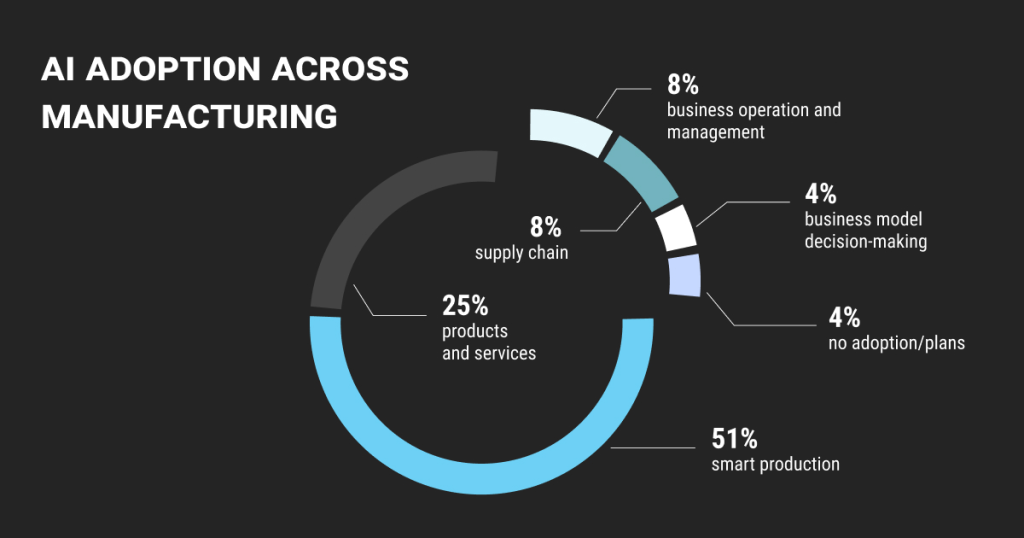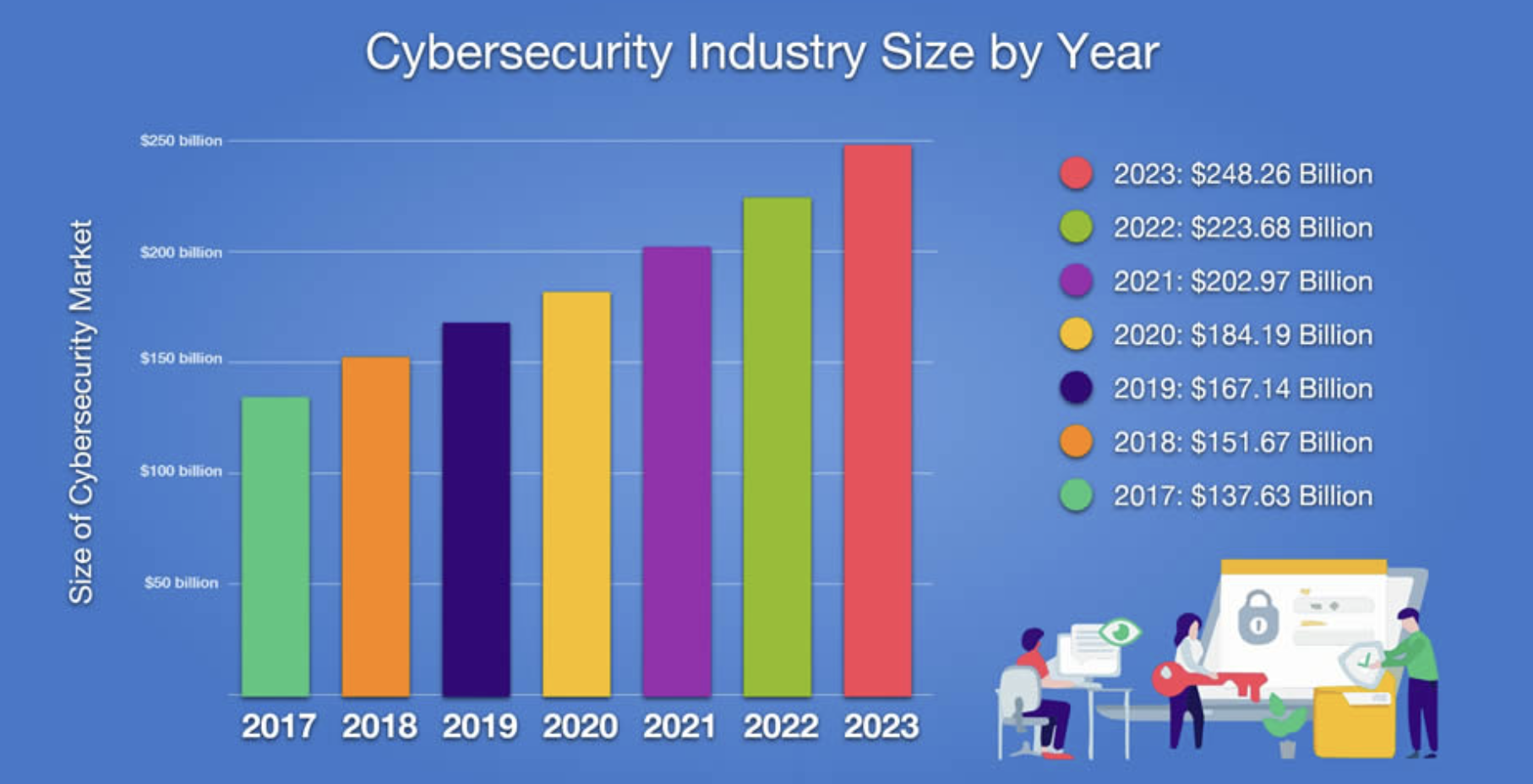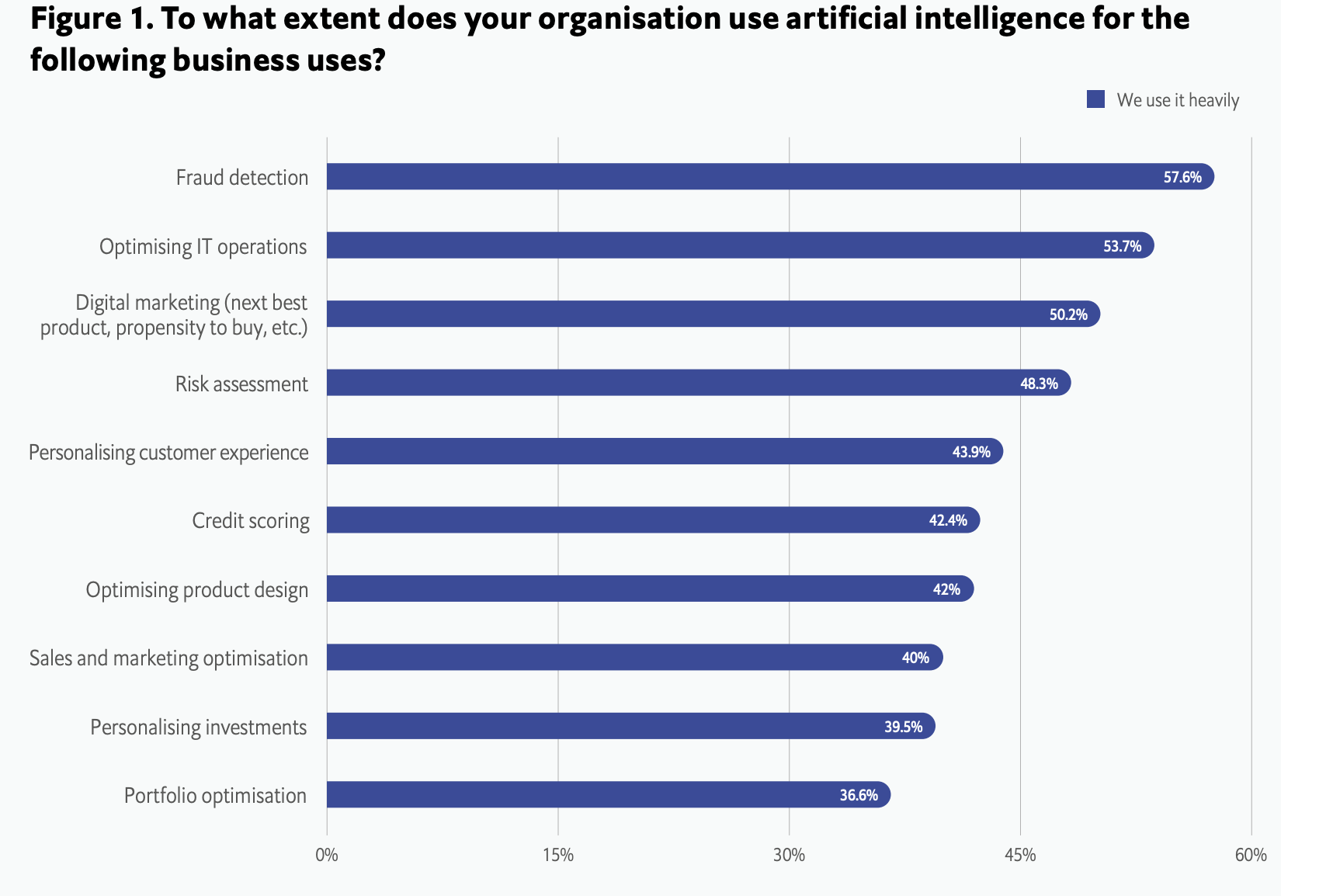State Of AI In 2024 In The Top 5 Industries
State of AI in 2024 in 5 Industries: Manufacturing, IT services, Healthcare, Finance and Banking, HR
AI is in vogue!!
A much-discussed domain on social media with loads of expectations and a smile. Well, it’s not worth it to take your time to introduce AI which you are already aware of which is the hyped version being played everywhere. But, let’s get a step closer to AI playing its fair role in the Top 5 domains of our global economy i.e.Manufacturing, IT services, Healthcare, Finance & Banking, and HR.
Read: 10 AI ML In Banking And Finances Trends To Look Out For In 2024
State of AI in 2024 in Manufacturing
AI will contribute up to $15.7 trillion to the manufacturing industry by 2025. McKinsey claims that businesses that adopt AI see increased profits and decreased expenses. While 18% of respondents observed a rise in income of 6-10%, 16% noted a drop in expenses of 10-19%.
Artificial intelligence (AI) is revolutionizing the industrial sector by increasing efficiency and allowing for more precise quality management. Because it can handle massive volumes of data in real-time, make choices on the fly, and automate procedures, AI is revolutionizing the manufacturing industry.
Nothing will be impossible. We have examples like Cobots working with humans, RPA tackling tedious tasks, Digital twins helping boost performance, Predictive maintenance improving safety, and lowering costs, Machine learning algorithms predicting demand, Inventory management preventing bottlenecks, AI autonomous vehicles, AI for factory automation, AI in design and manufacturing, AI-based connected factory, AI-based visual inspections, and quality control, AI for purchasing price variance and the list can continue.
Read Top 20 Uses of Artificial Intelligence In Cloud Computing For 2024
 Artificial intelligence (AI) is being implemented in factories to reduce the frequency and length of downtime. Artificial intelligence may be used in many different ways in the industrial industry. Such applications might be generalized as smart manufacturing, corporate operations, supply chain, and decision-making.
Artificial intelligence (AI) is being implemented in factories to reduce the frequency and length of downtime. Artificial intelligence may be used in many different ways in the industrial industry. Such applications might be generalized as smart manufacturing, corporate operations, supply chain, and decision-making.
The increased use of AI in manufacturing has improved my company’s capacity for strategic planning, supply chain management, and overall operation management. Using artificial intelligence, manufacturing companies with R&D programs may cut down on the time and money spent on conventional operational procedures.
State of AI in 2024 in IT services
In 2025, the total amount of information created by humans will be 175 zettabytes (175 followed by 21 zeros). Streaming media, dating applications, and medical records are all examples of this type of data. Securing this information is crucial.
 This graphic image has been taken from IBM for the year 2017-2023.
This graphic image has been taken from IBM for the year 2017-2023.
We have many examples that will be practiced in 2024 for AI success in the IT domain. It includes Zero Trust Security with ML, AI-Enhanced Threat Detection, Adaptive Access Control, Behavior-Based Authentication, Security Automation and Orchestration, Predictive Threat Intelligence, Explainable AI (XAI), Deepfake Detection, Cloud Security, and AI-Enhanced Security Awareness Training.
These trends reflect the growing importance of AI and ML in IT security, as the threat landscape continues to evolve. Organizations must stay updated on these trends and invest in the latest security technologies to protect their systems and data effectively. Additionally, compliance with relevant regulations and industry best practices should remain a top priority in IT security.
Read the Latest blog from us: AI And Cloud- The Perfect Match
State of AI in 2024 in Healthcare
 According to predictions, the worldwide market for artificial intelligence (AI) in healthcare would expand from an initial valuation of $15.1B in 2022 to more than $187.95B in 2030, a compound annual growth rate (CAGR) of 37 percent. The North American artificial intelligence healthcare industry was worth USD 6.8 billion in 2022.
According to predictions, the worldwide market for artificial intelligence (AI) in healthcare would expand from an initial valuation of $15.1B in 2022 to more than $187.95B in 2030, a compound annual growth rate (CAGR) of 37 percent. The North American artificial intelligence healthcare industry was worth USD 6.8 billion in 2022.
By 2024, artificial intelligence is expected to make great strides in the medical field. Deep learning algorithms improve the accuracy of X-ray, MRI, and CT scan interpretation, which is useful in medical imaging and diagnostics. AI plays a crucial role in the drug discovery process by sifting through large datasets in search of promising compounds and automating development.
Using a patient’s unique genetic and molecular profile, personalized medicine employs AI to create individualized treatment plans. Using natural language processing to glean insights from unstructured clinical data, predictive analytics helps with patient outcome prediction and at-risk population management. With the help of AI, telemedicine and RPM may provide patients with up-to-the-minute health information.
To guarantee ethical AI use, legislative frameworks, and ethical concerns have come to the fore. Instead of seeing AI as a replacement for human healthcare providers, the focus is on how AI systems may work in tandem with them. The picture highlights the revolutionary integration of AI into several aspects of healthcare, which holds great promise for better diagnoses, personalized treatments, and overall patient care.
State of AI in 2024 in Finance and Banking
The chart below has been taken from The Economist which gives an overview of the successful adoption of AI and ML in organizations.
 The development of the financial sector will be aided by AI. Many businesses now use digital methods, which have allowed them to increase sales, streamline operations, and concentrate on data. They’ll have to build up the level of individualization in their relationship-based client interaction going forward. Customized replies, safer and more responsible product and service suggestions, and expanding concierge services accessible at consumers’ beck and call all benefit greatly from AI’s involvement.
The development of the financial sector will be aided by AI. Many businesses now use digital methods, which have allowed them to increase sales, streamline operations, and concentrate on data. They’ll have to build up the level of individualization in their relationship-based client interaction going forward. Customized replies, safer and more responsible product and service suggestions, and expanding concierge services accessible at consumers’ beck and call all benefit greatly from AI’s involvement.
In addition, banks will have to create distinctive digital customer profiles based on customers’ permissions, although the information they require may be isolated in other databases. Financial institutions can scale effectively and meet the individualized demands of their consumers by eliminating silos, layering on AI, and employing human involvement seamlessly.
Although AI and ML are still in their infancy in banking, we may aspire for increased usage. Fortunately, financial institutions are recognizing the implications of AI and ML technology. However, most banks have restrictive systems that make technological transformation difficult. Banks must trust and utilize these technologies to overcome this.
State of AI in 2024 in HR
 Artificial intelligence (AI) has revolutionized HR by improving decision-making and simplifying procedures by the year 2024. Industry reports indicate that AI-driven recruiting solutions have significantly improved applicant matching by 40% and shortened the average time-to-hire by 30%. Human resource managers may now anticipate workforce trends with the use of predictive analytics and machine learning algorithms, allowing for proactive management of personnel.
Artificial intelligence (AI) has revolutionized HR by improving decision-making and simplifying procedures by the year 2024. Industry reports indicate that AI-driven recruiting solutions have significantly improved applicant matching by 40% and shortened the average time-to-hire by 30%. Human resource managers may now anticipate workforce trends with the use of predictive analytics and machine learning algorithms, allowing for proactive management of personnel.
Thanks to sentiment analysis tools driven by AI, employee engagement has skyrocketed, with reports of a whopping 20% increase in overall satisfaction. An estimated 25% improvement in HR operational efficiency has been made possible by the widespread use of chatbots and virtual assistants in responding to employee inquiries, managing mundane HR chores, and streamlining the onboarding process.
A fifteen percent increase in the employment of diverse talent was observed in AI-driven diversity and inclusion programs, with ethical concerns and the mitigation of prejudice continuing to focus themes. A further factor that has been linked to an 18% uptick in staff skill acquisition is the ongoing progress in natural language processing, which has allowed for more tailored learning and development programs. Transformative efficiency, better decision-making, and a more inclusive and engaged staff have all resulted from AI’s incorporation into HR.
Read OpenAI Open-Source ASR Model Launched- Whisper 3
[To share your insights with us, please write to sghosh@martechseries.com]

Comments are closed.